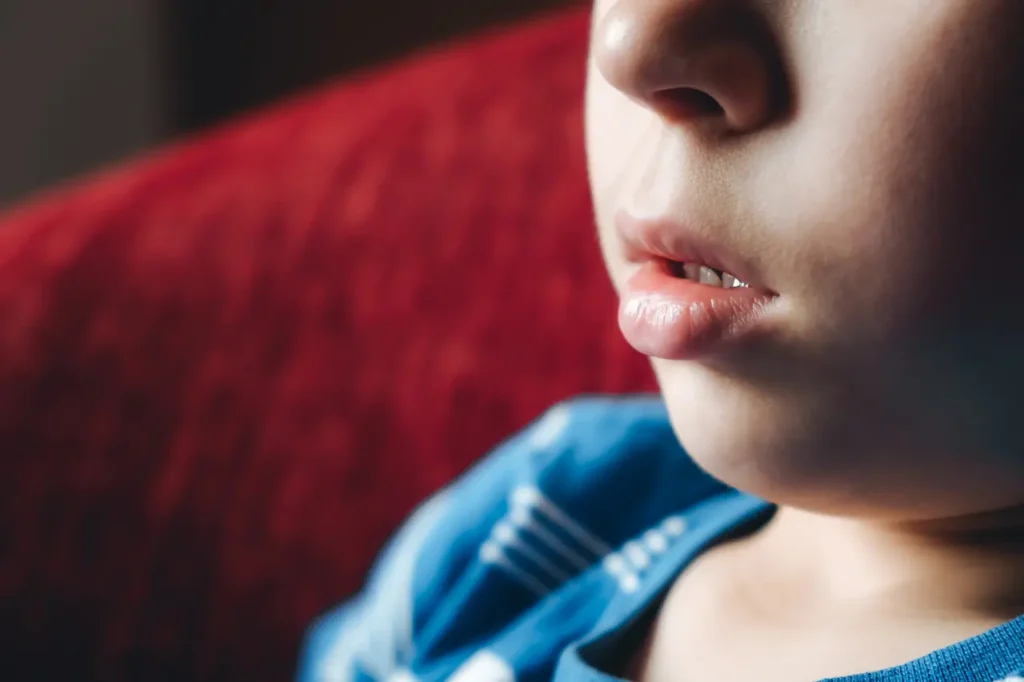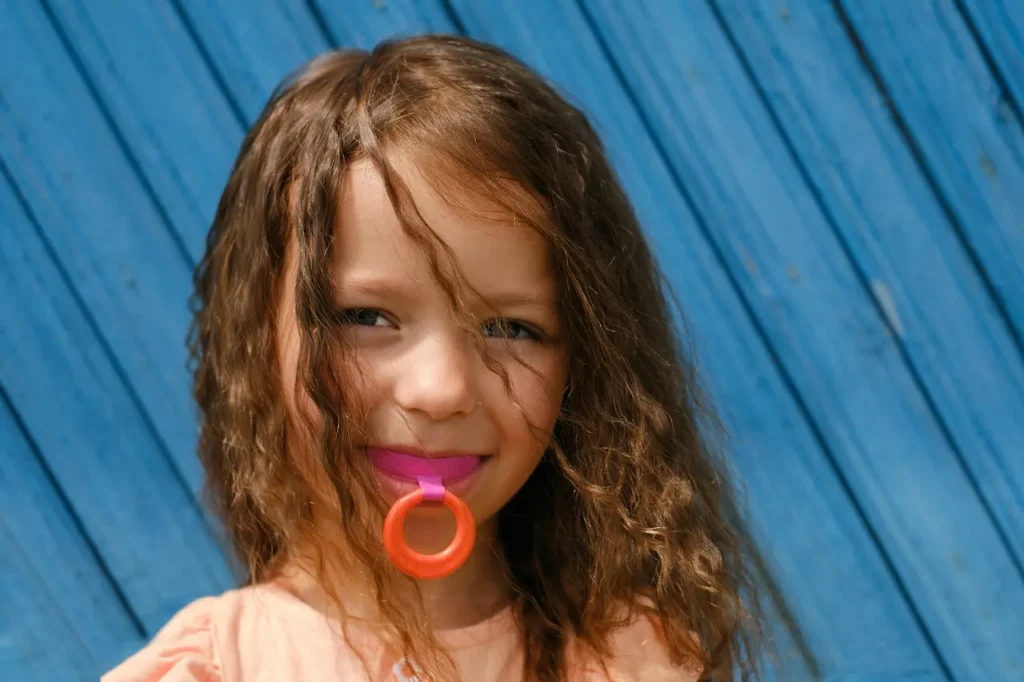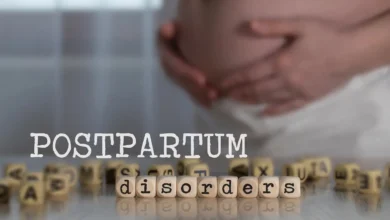The Dangers of Mouth Breathing in Children
Mum’s Guide to Protecting Your Child From the Risks of Mouth Breathing
A Daily Struggle
Melody’s family and she struggled daily with Kian. Kian’s temper and emotional instability were evident from a young child. His family was often left feeling tired by his tantrums. Kian’s behavior wasn’t just confined to the home. He also got into trouble at school. Teachers said he was known to put his hands on children and to have difficulty concentrating. This led to him being in trouble with the school authorities.
Melody pursued Kian’s help with a relentless determination. She realized that Kian’s behavior was more than a passing phase. It was something deeper. His struggles were felt by his entire family. This created a tension-filled environment, filled with frustration and worry. Melody, as a mom, felt that Kian was often unwell. She sought answers and solutions.

What is ADHD?
Kian’s pediatrician suggested that he visit a therapist as he continued to struggle. The therapist started working with Kian and eventually suggested that he be tested for Attention Deficit Hyperactivity Disorder. The therapist began working with Kian and suggested testing for Attention Deficit Hyperactivity Disorder (ADHD). Melody became overwhelmed as the interventions and medications piled up.
She shared this in an online post. “Two inhalers to treat the cough, four different antibiotics for postnasal drainage, a steroid, and so on.” The therapist suggests ADHD and pushes us in that direction.
Kian’s behavior showed no improvement despite the numerous consultations and growing list of medications prescribed. Melody became increasingly frustrated as she watched Kian struggle, with no clear solution in sight.
The Dentist: A New Beginning
Everything began to change during a routine dentist appointment. Kian’s dental professional made a casual comment about Kian, noting how his teeth were almost half-ground down. This was an indication that Kian ground his teeth at bedtime. Melody’s seemingly innocent observation led her to dig deeper into Kian’s condition.
She recalled, “Lightning struck at just the right time.” I stumbled across an article that changed my family’s life. This article discussed the link between ADHD, sleep-disordered breathing, and mouth breathing. “Every word in this article sounds like Kian.”
Melody sought specialized treatment after her newfound knowledge prompted her to do extensive research. They found that Kian’s mouth breathing was related to a sleeping disorder. This had a significant impact on his behavior, health, and development.
Cascade of Health Consequences
Melody explains that mouth breathing is not only a cause of sleep disruption and low oxygen levels but also a major contributor to other health problems. Mouth breathing can affect a child’s facial development, leading to issues such as a narrow, high palate, a recessed jaw, speech difficulties, and misaligned tooth. These changes can narrow the airways and exacerbate the original problem.
Medical professionals call the resultant appearance of a longer face caused by these changes “Adenoid Face.” Melody encouraged parents to be aware of the symptoms that could indicate a deeper problem:
- Fall asleep as soon as the head hitss the pillow This may indicate extreme fatigue caused by poor sleep quality.
- Snoring: Loud snoring is a sign of an airway obstruction.
- Grinding your teeth, this is a sign that you are stressed or uncomfortable due to an incorrect jaw alignment.
- Wake up at night: Frequent awakenings may disrupt sleep cycles.
- Accidents that occur at night or during the day can be related to sleep disorders.
- Have trouble controlling impulses? This is a behavioral symptom of sleep deprivation.
- If you have difficulty understanding what you are saying, this could be a sign that your jaw alignment is causing the problem.
- Dark circles under the eyes can indicate fatigue or poor sleep.
- Crooked teeth and a misaligned jaw can be indicators of developmental problems.
- A child who wakes up too early may not be able to complete a sleep cycle.
- Irritability during the day, Chronic fatigue may lead to mood swings.
- A poor appetite can be caused by the body’s response to stress due to lack of sleep.
Melody emphasized the strong connection between sleep disorders, ADHD, and Melody. Many children who were misdiagnosed with ADHD no longer show ADHD symptoms after treatment.
You might also like: 7 Clever Tips For Cutting Your Kids Nails
Diagnosis of Sleep Apnea
Kian was diagnosed as having sleep apnea after consulting with an ENT specialist. He also underwent a sleep test. He had no REM sleep in his first study, and oxygen saturation levels were in the low 80s. His sinuses had 90% blockage, which explained his health and behavior issues.
Kian’s adenoids, tonsils, and other enlarged tissues were removed. The results were immediate and amazing. The headaches that had plagued him–unknown to his parents–disappeared. He was able to breathe normally and enjoy restful sleep.
Melody said, “There are no longer any angry tantrums or obsessions with OCD-related things. It’s a huge change.” We haven’t finished the second stage yet–fixing his tongue and jaw issues, which developed because of undiagnosed sleep apnea. The results of our follow-up study revealed 360 minutes of REM sleep with oxygen saturation levels above the minimum threshold. No reports of bad behavior in school. He has a much larger appetite, is no longer picky, and had a growth spurt two weeks after surgery.

Share the Knowledge
Melody’s heartfelt post on Facebook compiled several studies that illustrate the connection between sleep disorders, behavior, and child development. She encouraged parents to look deeper if their children showed any of Kian’s symptoms.
If you have any concerns, if it sounds like your child or if they’ve been diagnosed with ADHD, please consult an ENT. Get a sleep test. She stressed the importance of taking proactive measures.
Understanding Mouth Breathing In Children
Mouth breathing may begin in early childhood, but is often not noticed until later. Newborns breathe naturally through their noses unless they have a blockage. According to studies, mouth breathing in a sleeping baby may be due to an obstruction of the upper airway. As children grow older, the risk of mouth breathing increases, particularly if they have allergies, infections, or anatomical problems.
Causes of Mouth Breathing
Jaw development is the primary reason why children start mouth breathing. Ideal jaw development for children is U-shaped, wide and allows them to breathe through their nose. Smaller jaws are becoming more common. This can lead to overcrowded smiles, crooked teeth and jaw alignment problems.
Mouth breathing is also caused by:
- Sleep Apnea If a child snores it could be a sign of sleep apnea. This is when the upper airway becomes blocked by enlarged tonsils and adenoids. This condition may include symptoms such as choking or restlessness while sleeping.
- An Undiagnosed allergy can cause significant breathing problems, forcing the child to breathe through their mouth.
- Mucus A child with a stuffy nose caused by a cold, infection, or other illness may resort to mouth-breathing as a means of breathing.
- Anatomical Issue: A deviated or abnormal septum, as well as other structural problems, can prevent nasal breathing and cause children to breathe with their mouths.
Risk Factors of Mouth Breathing
Mouth breathing can be caused by several factors.
- Early weaning: Children who discontinue breastfeeding before three months may be at greater risk. Breastfeeding promotes nasal breathing and aids in the development of the jaw and mouth.
- Tongue Tie: A tight frenulum may prevent proper breastfeeding and development of the orofacial region, resulting in airway obstruction at night.
- Pacifier and Thumb-Sucking: Long-term thumb-sucking can lead to an airway obstruction and a narrowed jaw.
- Enlarged Toxoids: Swollen toxoids can partially block airways and cause mouth breathing while sleeping.
How to Recognize Mouth Breathing
You may notice that your child breathes through their mouth either while asleep or awake.
- Loud snoring can be an indication of an airway obstruction.
- Mouth breathing while awake: If you notice your child is breathing through the mouth, it’s a sign.
- Grinding Teeth While Sleeping. This can be caused by discomfort from improper jaw alignment.
- Snoring When Crying: This could indicate an airway issue that interferes with normal breathing.
- Silent breathing: Children who breathe silently while sleeping may do so by mouth.
- Problems Concentrating at School or Behavior Issues: A lack of sleep can cause problems with focus and self-regulation.
You might also like: What Kids Need for Starting School
Health Complications of Mouth Breathing
Breathing with the mouth has significant health consequences. Nasal breathing is essential for filtering the air, removing toxic substances, and ensuring oxygen extraction in lungs. Children who breathe through their mouths miss out on essential benefits that can lead to asthma and other respiratory problems.
Various health issues
- Oral health problems: Mouth-breathing can cause dry mouth which decreases salivation and increases the risk for cavities and gingivitis.
- Health Problems: High blood pressure, allergies, and sleep disorders can all be made worse by mouth breathing.
- Orthodontic Problems: Poor jaw development may lead to crowding of teeth and misalignment, requiring orthodontic treatment.
- Facial Deformity: Mouth-breathing can affect facial structure, causing long-term aesthetic issues.
- Speech problems: Mouth breathing and a forward-thrusting tongue can cause speech difficulties.
- Sleep disorders: Mouth breathing can exacerbate sleep apnea, snoring, and other conditions that lead to fatigue and behavioral problems.
Treatment Options for Mouth Breathing
It’s important to seek professional advice if you suspect that your child may be a mouth breather. A pediatric dentist will refer you to specialists who can diagnose and treat your child. Treatment options include:
- Breathing retraining: Teach children to breathe through the nose. This can help correct their habit of mouth-breathing.
- Allergy management: Allergic reactions can be managed by identifying and managing them.
- Orthodontic Treatment: Races are sometimes necessary to guide the jaw and tooth development.
- Surgical interventions: Removal of obstructions like adenoids or tonsils, as well as correcting a deviated septum, can improve breathing patterns.

Conclusion
Melody’s experience with Kian is a reminder to all parents that mouth breathing can have far-reaching and significant consequences for the health and development of a child. Parents can profoundly help their children recognize signs of mouth-breathing, understand the potential impact, and seek medical intervention.
Do not hesitate to consult a professional if you suspect that your child is a mouth breather. Early intervention can have a profound impact on your child’s behavior, health, and happiness. These proactive measures not only help to address immediate concerns but also set the stage for healthier development in your child as they grow.



